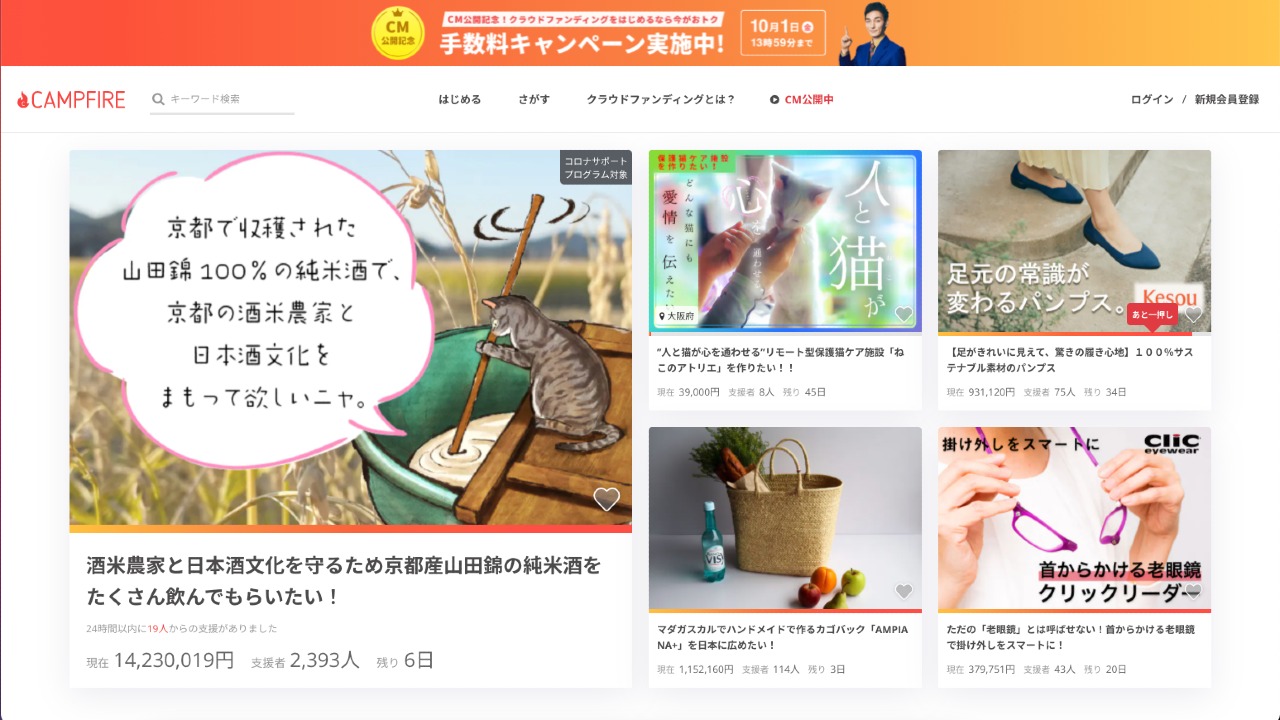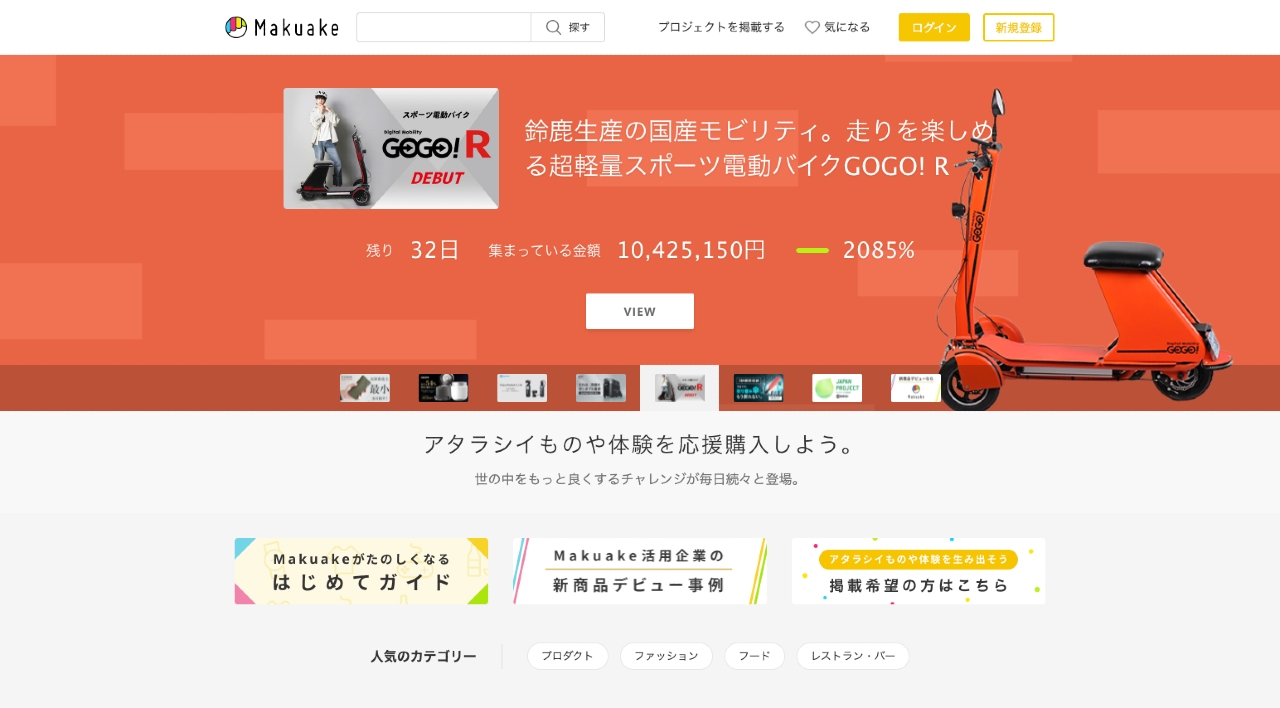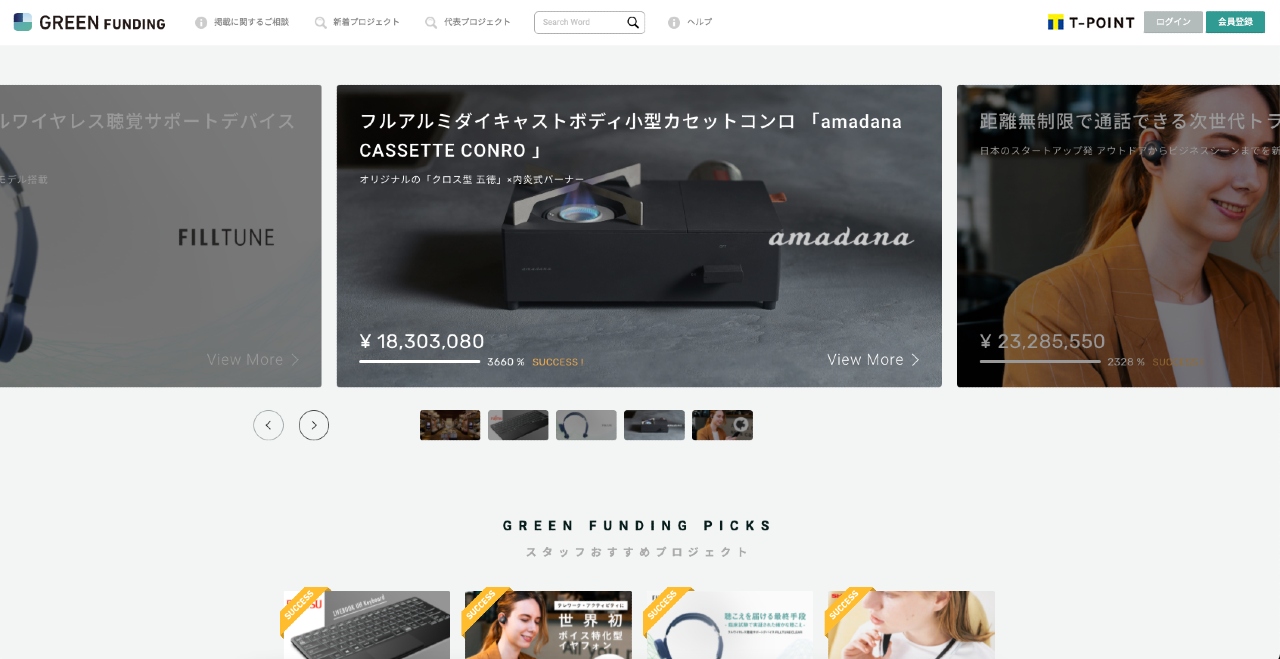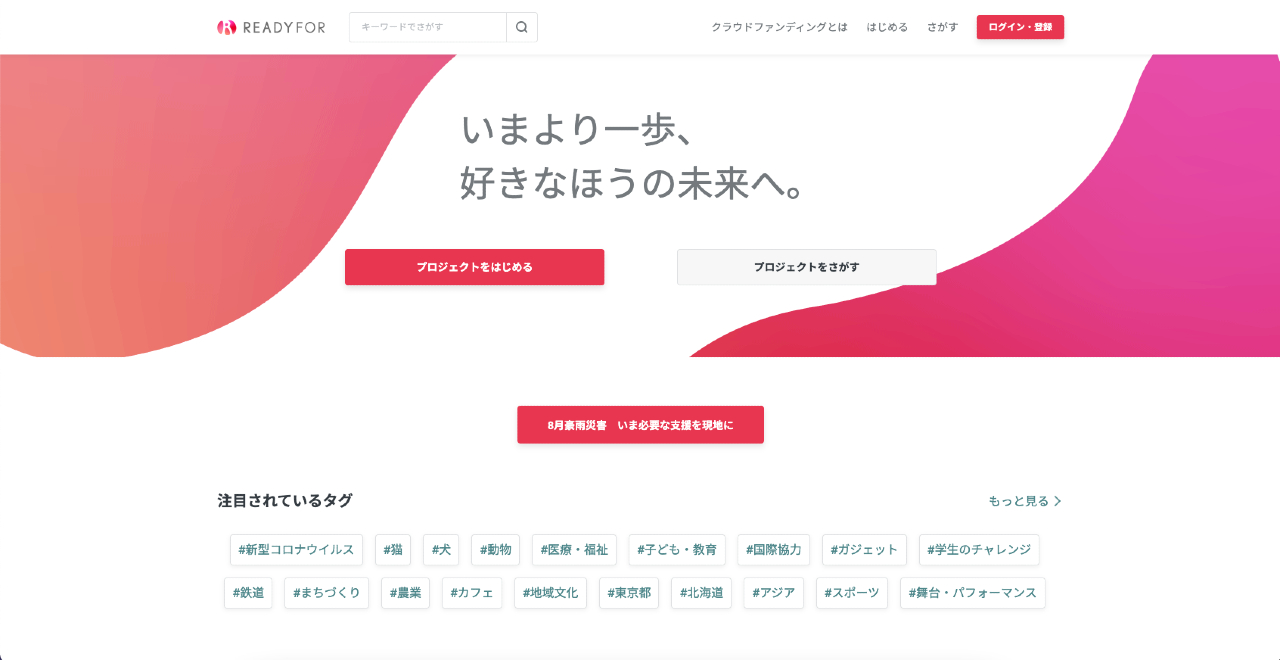You might already know that crowdfunding has changed the way entrepreneurs bring new products to the customer, but is it wise to use it as an approach for entering the Japanese market with an existing foreign brand?
Or, if you’re already operating in Japan, could it be a way for you to seriously kickstart ecommerce growth by spreading news about your plans far and wide?
Obviously, the answer will depend largely on your type of business, what exactly you want to achieve, and the level of experience you have in Japan’s rewarding but highly complex commercial landscape. However, we’ll do our best to explore the most important aspects of this topic so you can make an informed decision.
Why Should I Use Crowdfunding in Japan?
Running a crowdfunding campaign lets you do the following:
- Test new concepts
- Raise funds
- Build audiences
- Find new customers and drive sales
Clearly all of these are major benefits to any brand trying to gain traction in Japan. Streamlining a process that can sometimes take years for some companies, it allows you to take your brand, product or concept straight to the people you hope to sell to one day and see if they’re on board.
If you find success, not only will you be given the confidence to keep pushing on, but you’ll have gained a strong customer base that can help with everything from making those all-important first sales, to amplifying your messages to new groups and audiences.
As entering Japan is quite an expensive venture, it also won’t hurt to have some financial support behind you without needing to apply for bank loans or credit. And what many people overlook is that when you’ve got existing backing in this form, it gives you a much better chance of securing investments from other more substantial backers, now and in the future (if this is part of your growth plan).
Test Whether Japanese Customers Will Like Your Products

Many businesses are enticed by the fact that revenue in Japan’s ecommerce market is expected to show an annual growth rate of 6.5% between 2020 and 2025, but things like this don’t mean much if people don’t like your products.
By launching a campaign and reaching out to targeted networks, you can see what people really think about your offerings before you’ve heavily invested in the market — making crowdfunding in Japan an excellent learning exercise.
Pledgers are likely to give you an honest opinion, and their support (or lack of it) can be a sober indicator of how the wider market will respond to you. During your campaign, also consider:
- Are there any similar items on the market that customers currently prefer?
- Does your product overcome Japanese hesitancy in trying new foreign brands they’ve never heard of (instead of domestic labels)?
- Are there any cultural differences that make it less likely for customers to love your stuff?
If not answered through your initial market analysis, these questions could potentially be addressed through your crowdfunding campaign.
To learn more about the preferences of Japanese consumers, take a look at our blog: Marketing in Japan? 10 Important things You Need to Know About Japanese Consumers
Popular Crowdfunding Platforms in Japan
Each crowdfunding platform in Japan has its own fee structure as well as terms of services. Some will be more suited to certain types of businesses too, so always check the kind of past campaigns they’ve supported before you go ahead.
HB Pro Tip: Always check whether it’s possible to receive funds directly from the platform into your international bank account after the campaign is over. Otherwise, you’ll need to set up a local account or contact a Japanese proxy service that will be able to collect the money on your behalf.
CAMPFIRE

| Site Visibility | 6.3 Million (Monthly Visitors) |
| Fees | 17% |
Source: SimilarWeb
Known as the largest platform for crowdfunding in Japan and founded in 2011 by Kazuma Leiri, CAMPFIRE has the strongest reputation for supporting the growth of start-ups as well as entrepreneurs who are coming into the market from abroad. The commission fee for this platform is currently 17%.
We’ve seen many successful campaigns from Western companies run on this platform, such as the super lightweight bicycle from Swiss company United City Bikes, whose campaign page is a good example of how to set up any campaign hub with it’s informative video, high quality graphics and detail-rich descriptions. Their campaign raised 71,787,052 JPY with a total of 655 backers.
Interestingly, their hero video features models and scenes from their home market which is not always the best move if you’re trying to convince new Japanese customers your products are aimed at them. Yet, with Switzerland’s national reputation for creating well-engineered products still holding strong in Japan, they’ve been able to leverage their “foreign appeal” strategically here.
Makuake

| Site Visibility | 8.4 Million (Monthly Visitors) |
| Fees | 20% |
Source: SimilarWeb
Makuake offers two different options for crowdfunding in Japan. The first is their “all or nothing plan”, which is similar to what most people are familiar with where the fundraiser will return funds if their target is not reached in full.
The second is their “all in” plan, where you can still receive funds regardless of the total you reach and how far off your goal you are. In both cases, their fee will be 20% of the total raised.
Traditionally, this option hasn’t been the best-suited to foreign brands as their focus has long been on domestic start-ups and concepts rather than new entrants from abroad. A look at their active campaign shows that there are in fact a mix of both Japanese and international fundraisers.
HB Pro Tip: Check each platform for past campaigns that are in your product category too. This is a sign that the platform supports the kind of thing you’re doing and that their audience has an appetite for similar products and brands.
Green Funding

| Site Visibility | 2.5 Million (Monthly Visitors) |
| Fees | 20% |
Source: SimilarWeb
Green Funding was founded in 2011 by the Tsutaya Group and today is one of the biggest crowdfunding platforms in Japan. The company also uses its ties to the Tsutaya Bookstore, Tsutaya Home Appliances, and other Tsutaya owned entities to hold “product exhibitions, sales, hands-on sessions, autograph sessions, talk shows at real stores”, according to the Green Funding.
In terms of fees, you will be charged 20% of the total amount raised if you reach your target. If you miss the mark though, no cost will be incurred.
An example of a recent Western brand that launched a crowdfunding campaign on this site is the internationally-popular watch company Citizen. Their success in raising 106,419,704 JPY with 2748 supporters for their Eco Driver watch shows that with the right product and concept, foreign brands can gather funding and raise awareness just as well as domestic ones can on this platform.
Readyfor

| Site Visibility | 2.3 Million (Monthly visitors) |
| Fees | 12% |
Source: SimilarWeb
Perhaps the most standout feature of READYFOR’s crowdfunding offering is their low commission of 12% for their ‘simple plan’ (the lowest we’ve encountered for crowdfunding in Japan). However, they’ve placed an emphasis on supporting projects that offer an ethical, humanitarian or social element, so not all brands and concepts will be suited to this platform.
Examples of this include a restaurant where food is made by people with dementia, which raised 12,910,000 from 493 people and a project aimed at raising money to host a music expo in Kyoto that reached a total of 4,800,000 JPY from 546 people.
HB Pro Tip: Since its inception, the platform has prioritised success rates and still heavily vets fundraising proposals before they’re accepted, going as far as to ask funders to prove an existing friends or family base in Japan (to help ensure initial traction of campaigns).
How to Get the Most from Your Crowdfunding Campaign
Any crowdfunding campaign requires proactivity. Japanese consumers and investors must be sought out and convinced before you get them on board. And to reach them in the first place you need to leverage all the channels and tools at your disposal.
Your audience or social network should be the first thing you try to build up either organically or with a bit of paid budget (PPC marketing) to get the ball rolling.
Think about targeting business contacts on platforms like LinkedIn with a breakdown of your product concept and your future plans, while enticing the general public through platforms like Instagram through innovative concept art.
Wondering What the Japanese Social Media Landscape Looks Like?
Build An Online Hub for Your Campaign
Having somewhere to focus your new audience’s attention and drive traffic to is important for retaining any interest you manage to develop when crowdfunding in Japan. The most obvious choice for this is your campaign page on your chosen crowdfunding platform.
In this space, you’ll want to provide new audiences with a flawless first impression and plenty of enticing details to get them interested in who you are and where you’re going.
Compelling project descriptions, the motivations behind your plan, high-quality images of product designs or prototypes, and an amazing introductory video are fundamental to the success of most campaigns.
HB Pro Tip: If you’re lucky enough, your project might be featured on the homepage of your crowdfunding platform, so don’t underestimate the importance of your visuals and overall attention to detail. Review past successful projects for how they’ve set up their pages and do your best to follow best practices.
Showcase Credibility Through Quality

If you’re developing a video for the Japanese market (which we highly recommend), make sure it’s a great one. Hire the right production team, models, filming space, and generally look for all opportunities to showcase the credibility and trustworthiness of you and your concept.
The same principle applies to any kind of visual content on your page. As we’ve mentioned before, Japanese consumers have high expectations for quality and if your content is clunky, or even worse, non-localized for the market, you won’t get very far.
Set Attractive Rewards
Be strategic when planning your rewards. Take notice of current trends and how the rewards of other projects are perceived by customers. Making sure they are attractive enough to draw people in is important, even if you have an amazing concept that people are willing to back.
You should also build a logical reward system or tiered structure that incentivizes people to offer you even more support. A greater contribution should result in a better reward. Some ideas to consider are:
- Free merchandise
- First access to product ranges
- Ongoing discounts
- A free time-based subscription (e.g. for digital services)
- Limited edition prizes, toys and branded accessories
- Tickets for events
- A shoutout or mention on the company page or owner’s personal social
Create A Sense of Urgency
The timeline of your campaign should be both defined and realistic. You want people to think “this is happening now” and that the window for getting on board will close soon. A 30-day campaign for example (the time in which you need to reach your target by) might seem daunting, but the urgency it creates can help you pull in more backers.
What you don’t want is people feeling they can come back later after they’ve thought about it some more, only to completely forget about you.
You also need to provide an estimated delivery timeline on rewards and provide regular updates to your backers so they always know how you’re progressing.
HB Pro Tip: Once people have made an initial contribution, what’s to say they won’t give more, or if they are excited enough, promote you on their channels so that more people will discover you. Looking after the people you’ve initially managed to convince is just as important as convincing them in the first place!
Nail Down Your Brand Localization for Japan
When we helped the UK pop-up tent company CINCH! with their crowdfunding campaign for the Japanese market, we placed a heavy emphasis on brand localization in the initial stages. We knew this would lay the foundation for their campaign as well as future marketing initiatives.
One of the ways we did this was to pay extra attention to aspects of detail and design in product photography with a new photo shoot targeting aspects of the product we thought Japanese shoppers would be more likely to pay attention to.
It’s about understanding who your audience is and tweaking or adapting your approach to better match their needs and preferences.
HB Pro Tip: Making certain aspects of your brand more pronounced, such as your technology, materials or engineering, is common practice during the localization process for Japan. Equally, downplaying other elements that are too different or unique might also be necessary, as Japanese shoppers have been known to prefer products that are generally accepted by their peers, rather than too rogue or different.
To learn more about how to localize your content and avoid translation mistakes, take a look at our blog: Japanese Marketing Translation – Best Practices, Pitfalls, and Tips for How to Avoid Embarrassment
What Happens Next?

Once your crowdfunding campaign is over, there’s plenty more to be done. Use the data and insights you have to keep your backers engaged and update them with news and personalised experiences or rewards.
While gaining new followers is also important, the group of people you manage to educate in your earliest days could turn into your most loyal repeat customers and best brand advocates. Nurturing this core group will make everything from social media marketing to promoting your new offers and discounts easier.